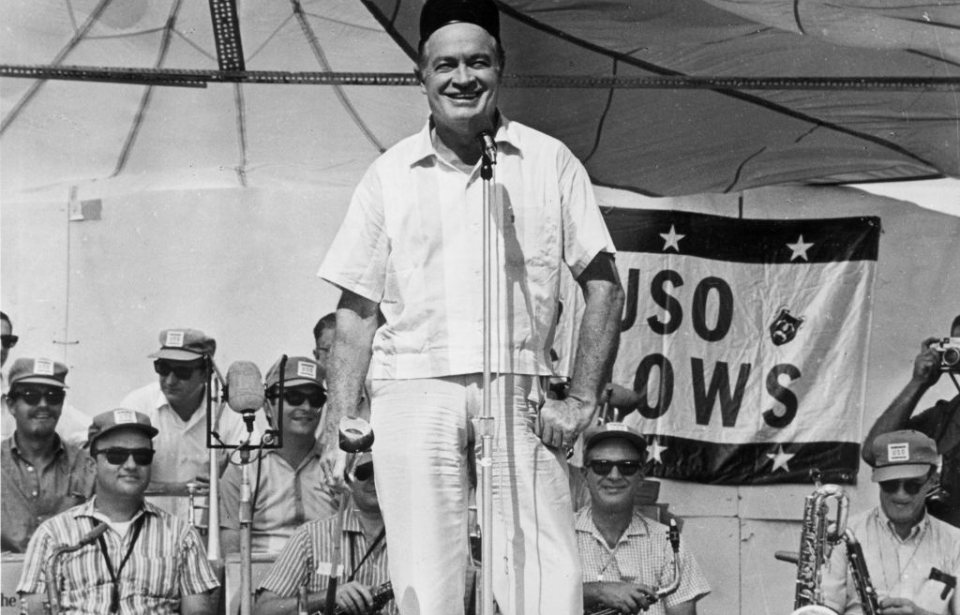Being away from home for long periods of time can be demoralizing for troops. With the Second World War continuing to rage in both Europe and the Pacific, the US military decided these brave individuals deserved some entertainment, leading to the United Service Organizations (USO) coming into existence.
Since its inception over 80 years ago, the USO has put on shows for American service members all over the world. Among those to perform with the agency was the one and only Bob Hope.
United Service Organizations (USO)
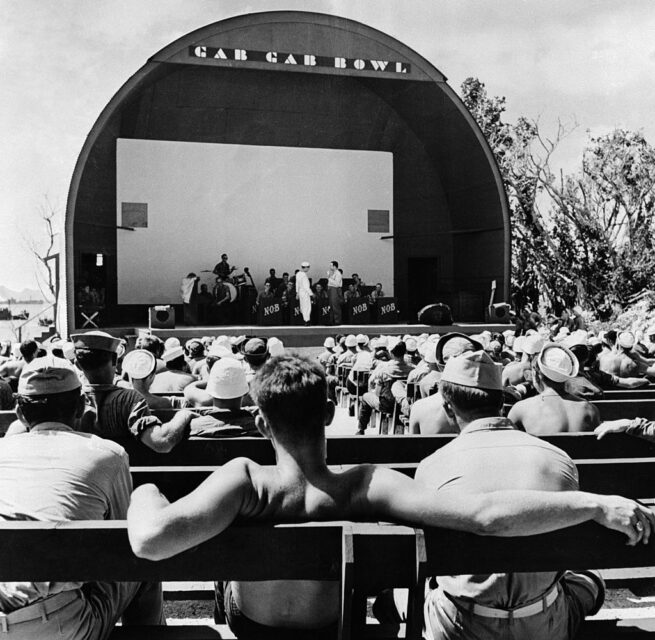
The United Service Organizations was established in February 1941 by Mary Ingraham, following a request from US President Franklin D. Roosevelt, who wanted to keep troop morale up overseas. The United States hadn’t yet entered World War II (that would come at the end of the year, following the Japanese attack on Pearl Harbor), but many were aware such an initiative was needed.
Several big-name individuals in the entertainment industry got involved in the USO, with many traveling overseas during the conflict to perform in front of the thousands of service members who’d been deployed. In the first seven years of its existence, 400,000 shows were put on by 7,000 volunteer performers, and an impressive 3,000 camps had been opened.
Among those to volunteer with the USO were Marilyn Monroe, Humphrey Bogart and Frank Sinatra. As aforementioned, Bob Hope was also involved, putting on performances for several decades, from 1941-90.
Bob Hope immediately volunteered with the USO
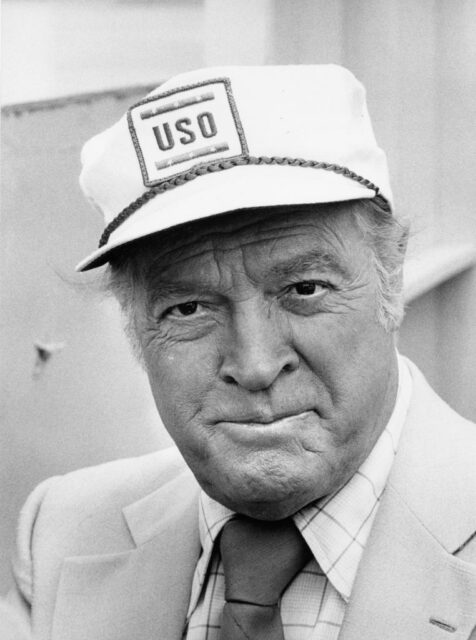
By the outbreak of World War II in September 1939, Bob Hope was already a big star in radio and television. He was coming off The Big Broadcast of 1938 with W.C. Fields, where he first sang his soon-to-be signature song, “Thanks for the Memory.”
The comedian and entertainer was aboard the ocean liner RMS Queen Mary when the war broke out and, recognizing the need to keep his fellow passengers’ spirits up, volunteered to sing “Thanks for the Memory” with revised lyrics.
In May 1941, Hope performed his first USO show at March Field, California, taking to the radio to entertain members of the US Army Air Corps (USAAC). This made him one of the first big-time Hollywood stars to volunteer with the agency.
Performing with the USO throughout World War II
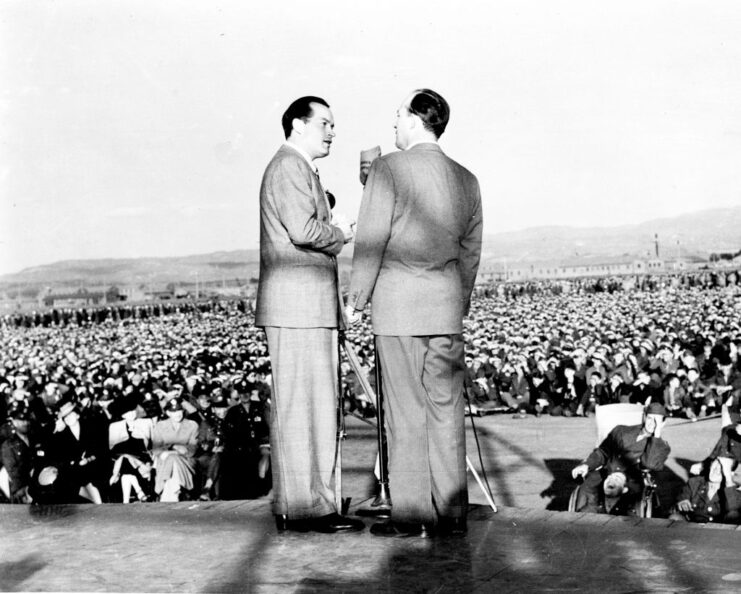
The first overseas USO shows of the Second World War began in the Caribbean in November 1941, with Bob Hope being a major figure at many performances. According to John Steinbeck, who was working as a war correspondent at the time, the comedian was right at home with the troops.
“When the time for recognition of service to the nation in wartime comes to be considered, Bob Hope should be high on the list,” he wrote. “This man drives himself and is driven. It is impossible to see how he can do so much, can cover so much ground, can work so hard, and can be so effective. He works month after month at a pace that would kill most people.”
Hope became such an integral part of the war effort that he and his best friend and fellow entertainer, Bing Crosby, were offered the chance to enlist in the US Navy. Franklin Roosevelt, however, stepped in, saying the pair should avoid joining, so they could continue to entertain all branches of the armed forces.
By the end of the conflict, Hope had put together 144 broadcasts with the USO, along with several in-person performances. He took the stage with a vaudeville troupe, touring all theaters of the war and performing in front of tens of thousands of men and women who’d been deployed overseas.
Bob Hope faced danger to entertain troops overseas with the USO
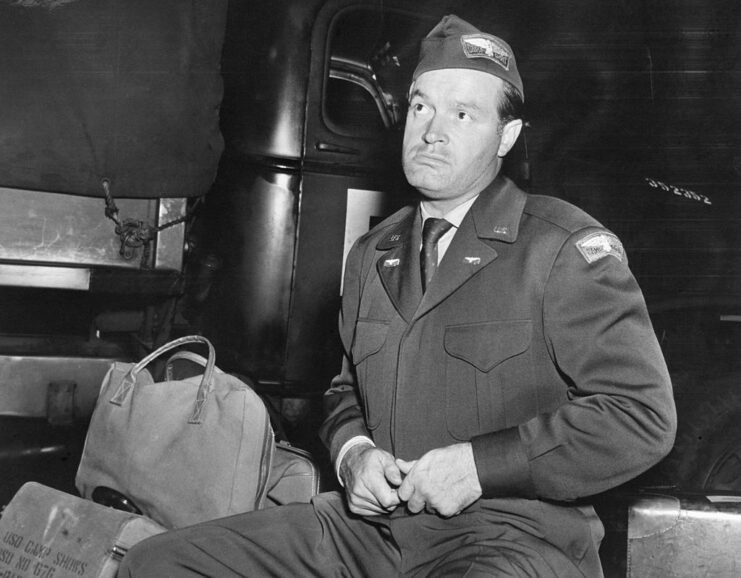
While Bob Hope was overseas, the Germans hunted the comedian, knowing that, if they attacked areas where he was, they’d be able to take out several Allied service members, as well.
According to war correspondent Quentin Reynolds, “He and his troupe would do 300 miles in a jeep, and give four shows … One of the generals said Hope was a first-rate military target since he was worth a division; that’s about 15,000 men. Presumably, the [Germans] appreciated Hope’s value since they thrice bombed towns while the comic was there.”
Despite the danger he faced, Hope persevered, as he knew his performances with the USO were about more than just himself.
“Believe me when I say that laughter up at the frontlines is a very precious thing – precious to those grand guys who are giving and taking the awful business that goes on there,” he said in 1944. “There’s a lump the size of Grant’s Tomb in your throat when they come up to you and shake your hand and mumble ‘Thanks.’ Imagine those guys thanking me! Look what they’re doin’ for me. And for you.”
Questioning the anti-war sentiment during the Vietnam War
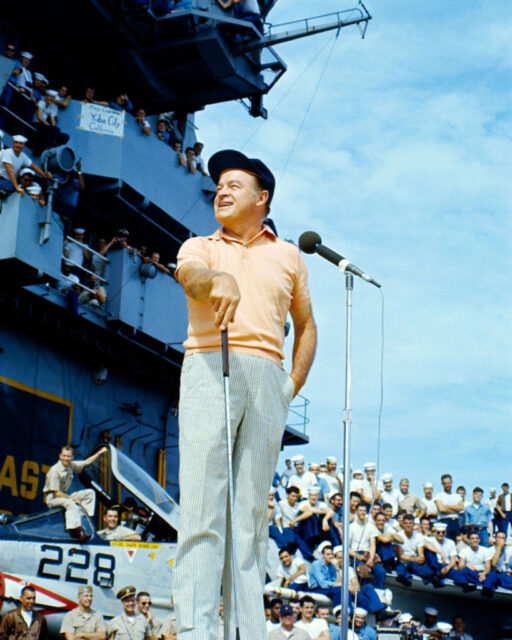
For the most part, the American public supported troops being deployed during World War II and the Korean War. Vietnam, however, was quite different. Many questioned why the US military was involved in the conflict, with many opposed to being drafted into a war they disagreed with.
This pushback against the war effort was felt by Bob Hope as well, who continued his work with the USO during the conflict. He did, however, question the public’s anti-war sentiment, writing in a magazine article, “Can you imagine, that people in America are burning their draft cards to show their opposition and that some of them are actually rooting for your defeat?”
Hope requested to visit Vietnam in 1962, but it took two years for President Lyndon B. Johnson to grant him permission. Many of his performances were filmed, allowing them to be aired back in the United States. In 1967, Viet Cong guerrillas targeted him and his troupe in Saigon. Miraculously, they missed him by 10 minutes!
Operation Desert Storm and Bob Hope’s enduring legacy
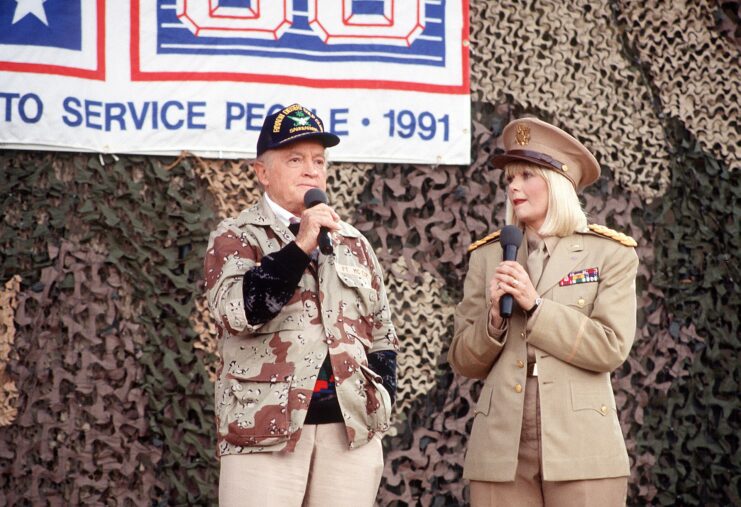
Bob Hope’s final performance with the USO came during Operation Desert Shield, when he and his wife, Dolores, traveled to Saudi Arabia to spend Christmas with the troops. Due to the environment, the show was quite toned-down, with biographer William Robert Faith explaining,
“There were so many restrictions. Hope’s jokes were monitored by the State Department to avoid offending the Saudis … and the media was restricted from covering the shows … Because in Saudi Arabia national custom prescribes that women must be veiled in public, Ann Jillian, Marie Osmond, and the Pointer Sisters were left off Hope’s Christmas Eve show.”
More from us: John Ford Called Out John Wayne on Set for Not Serving in World War II
By the time Hope had retired from performing with the USO, he’d performed an untold number of shows, headlining a whopping 57 times. He also put on 48 Christmas shows and received over 2,000 awards and citations. For his decades of dedication, he was named by Congress as the “first and only honorary veteran of the US armed forces.”
